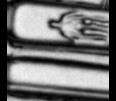Scanning acoustic microscope
A scanning acoustic microscope (SAM) is a device which uses focused sound to investigate, measure, or image an object (a process called scanning acoustic tomography). It is commonly used in failure analysis and non-destructive evaluation. It also has applications in biological and medical research. The semiconductor industry has found the SAM useful in detecting voids, cracks, and delaminations within microelectronic packages.

History
The first scanning acoustic microscope (SAM), with a 50 MHz ultrasonic lens, was developed in 1974 by R. A. Lemons and C. F. Quate at the Microwave Laboratory of Stanford University.[1] A few years later, in 1980, the first high-resolution (with a frequency up to 500 MHz) through-transmission SAM was built by R.Gr. Maev and his students at his Laboratory of Biophysical Introscopy of the Russian Academy of Sciences.[2] First commercial SAM ELSAM, with a broad frequency range from 100 MHz up to 1.8 GHz, was built at the Ernst Leitz GmbH by the group led by Martin Hoppe and his consultants Abdullah Atalar (Stanford University), Roman Maev (Russian Academy of Sciences) and Andrew Briggs (Oxford University.)[3][4]
Since then, many improvements to such systems have been made to enhance resolution and accuracy. Most of them were described in detail in the monograph Advanced in Acoustic Microscopy, Ed. by Andrew Briggs, 1992, Oxford University Press and in monograph by Roman Maev, Acoustic Microscopy Fundamentals and Applications, Monograph, Wiley & Son - VCH, 291 pages, August 2008, as well as recently in [5].
Principles of operation
Scanning acoustic microscopy works by directing focused sound from a transducer at a small point on a target object. Sound hitting the object is either scattered, absorbed, reflected (scattered at 180°) or transmitted (scattered at 0°). It is possible to detect the scattered pulses travelling in a particular direction. A detected pulse informs of the presence of a boundary or object. The `time of flight' of the pulse is defined as the time taken for it to be emitted by an acoustic source, scattered by an object and received by the detector, which is usually coincident with the source. The time of flight can be used to determine the distance of the inhomogeneity from the source given knowledge of the speed through the medium.
Based on the measurement, a value is assigned to the location investigated. The transducer (or object) is moved slightly and then insonified again. This process is repeated in a systematic pattern until the entire region of interest has been investigated. Often the values for each point are assembled into an image of the object. The contrast seen in the image is based either on the object's geometry or material composition. The resolution of the image is limited either by the physical scanning resolution or the width of the sound beam (which in turn is determined by the frequency of the sound).
Applications
- Fast production control - Standards : IPC A610, Mil-Std883, J-Std-035, Esa, etc - Parts sorting - Inspection of solder pads, flip-chip, underfill, die-attach - Sealing joints - Brazed and welded joints - Qualification and fast selection of glues, adhesive, comparative analyses of aging, etc - Inclusions, heterogeneities, porosities, cracks in material
Device testing
SAM is used for counterfeit detection, product reliability testing, process validation, vendor qualification, quality control, failure analysis, research, and development. Detecting discontinuities in silicon is just one of the ways scanning acoustic microscopy is being used for testing in the semiconductor market.
Medicine and biology
SAM can provide data on the elasticity of cells and tissues, which can give useful information on the physical forces holding structures in a particular shape and the mechanics of structures such as the cytoskeleton.[6][7] These studies are particularly valuable in investigating processes such as cell motility.[8][9]
Some work has also been performed to assess penetration depth of particles injected into skin using needle-free injection [10]
Another promising direction was initiated by different groups to design and build portable hand-held SAM for subsurface diagnostics of soft and hard tissues [11][5] and this direction currently in the commercialization process in clinical and cosmetology practice.
See also
References
- Lemons R. A.; Quate C. F. (1974). "Acoustic microscope—scanning version". Appl. Phys. Lett. 24: 163–165. Bibcode:1974ApPhL..24..163L. doi:10.1063/1.1655136.
- 7. R. Gr. Maev, Principles and Future of Acoustic Microscopy, Proceedings of the Joint Soviet-West Germany International Symposium on Microscope Photometry and Acoustic Microscopy in Science, Moscow, Russia, 1-12, 1985
- M. Hoppe, R. Gr. Maev, Editors and Co-authors, Microscope Photometry and Acoustic Microscopy in Science, Proceedings of the FRG-USSR Symposium, Moscow, 231 pages, 1985.
- Hoppe, M., and Bereiter-Hahn, J., “Applications of scanning acoustic microscopy - survey and new aspects,” IEEE Trans. Ultrason., Ferroelectr. Freq. Control, 32 (2), 289 –301 (1985)
- R.Gr. Maev, Editor and Co-author, Advances in Acoustic Microscopy and High Resolution Ultrasonic Imaging: From Principles to New Applications, Monograph, 14 Chapters, 400 pages, Wiley & Son - VCH, April 2013
- Bereiter-Hahn J; Karl I; Lüers H; Vöth M (1995). "Mechanical basis of cell shape: investigations with the scanning acoustic microscope". Biochem. Cell Biol. 73 (7–8): 337–48. doi:10.1139/o95-042. PMID 8703407.
- Lüers H; Hillmann K; Litniewski J; Bereiter-Hahn J (1991). "Acoustic microscopy of cultured cells. Distribution of forces and cytoskeletal elements". Cell Biophys. 18 (3): 279–93. PMID 1726537.
- Hildebrand JA; Rugar D; Johnston RN; Quate CF (1981). "Acoustic microscopy of living cells". Proc. Natl. Acad. Sci. U.S.A. 78 (3): 1656–60. Bibcode:1981PNAS...78.1656H. doi:10.1073/pnas.78.3.1656. PMC 319191. PMID 6940179.
- Johnston RN; Atalar A; Heiserman J; Jipson V; Quate CF (1979). "Acoustic microscopy: resolution of subcellular detail". Proc. Natl. Acad. Sci. U.S.A. 76 (7): 3325–9. Bibcode:1979PNAS...76.3325J. doi:10.1073/pnas.76.7.3325. PMC 383818. PMID 291006.
- Condliffe, Jamie; Schiffter, Heiko; Coussios, Constantin C (2008). "An acoustic technique for mapping and sizing particles following needle-free transdermal drug and vaccine delivery". Journal of the Acoustical Society of America. 123 (5): 3001. Bibcode:2008ASAJ..123.3001C. doi:10.1121/1.2932570.
- Vogt, M., and Ermert, H., “Limited-angle spatial compounding imaging of skin with high-frequency ultrasound,” IEEE Trans. Ultrason., Ferroelectr. Freq. Control, 55 (9), 1975 –1983 (2011)